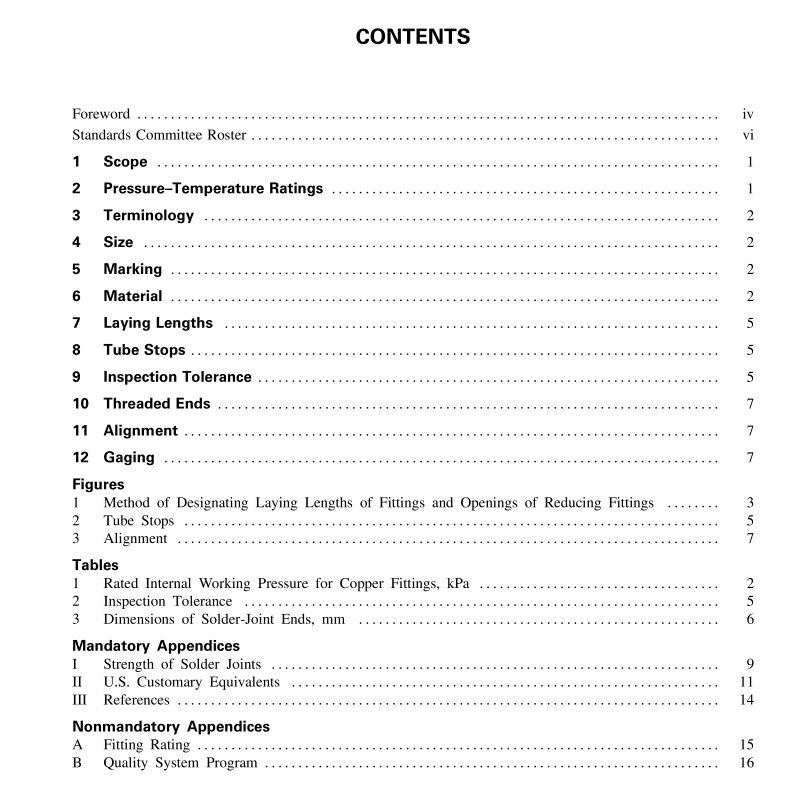ASME B16-22:2001 pdf free download WROUGHT COPPER AND COPPER ALLOY SOLDER JOINT PRESSURE FITTINGS
For reducer or adapter fittings, the smallest end diameter shall apply, provided that this diameter does not restrict the other outlets.
9.4 Wall Thickness The minimum wall thickness shall not be less than that shown in Table 3 (Table II3).
10 THREADED ENDS Fitting threads shall be right-hand, conforming to ASME B1.20.1. They shall be taper threads (NPT).
10.1 Countersink or Chamfer All internal threads shall be countersunk a distance no less than one-half the pitch of the thread, at an angle of approximately 45 deg with the axis of the thread. All external threads shall be chamfered at an angle of 30–45 deg from the axis. Countersinking and chamfering shall be concentric with the threads. The length of threads shall be measured to include the countersink or chamfer.
10.2 Threading Tolerances Tapered pipe threads (NPT) shall be checked by use of plug or ring gages in either standard or limit types. When gaging internal taper threads, the plug gage shall be screwed hand-tight into the fitting. The reference point for gaging internal product threads depends on the chamfer diameter. When the internal chamfer diameter 7 exceeds the major diameter of the internal thread, the reference point shall be the last thread scratch on the chamfer cone. Otherwise, when the internal chamfer diameter does not exceed the major diameter of the internal thread, the reference point shall be the end of the fitting.
In gaging external taper threads, the ring gage shall be screwed hand-tight on the external thread. On the external thread, the ring gage shall be flush with the end of the thread. Tolerance for an internal threaded end having an internal shoulder shall be from the gage reference point (notch) to one turn small. Tolerance for an internally threaded end without a shoulder, and for an externally threaded end, shall be from one turn small to one turn large. 10.3 Design of Threaded Ends The wrenching section of internally threaded ends shall be polygonal, and the wrenching section of exter- nally threaded ends shall be furnished with either polygon or flats, at the manufacturer’s option.
11 ALIGNMENT The maximum allowable deviation in the angular alignment of any end from the specified axis position shall be 1 ⁄ 2 deg (1 deg total). See Fig. 3.
12 GAGING
12.1 Preferred Gaging Method of Solder- Joint Ends The preferred method of gaging the diameter tolerances for external and internal ends shall be by the use of plain plug and ring gages designed to hold the product within the limits established in Table 3 (Table II3). Gage tolerances shall be Class ZM, as defined in ASME B4.4M.
12.2 Optional Gaging Method of Solder-Joint Ends For gaging the diameter tolerance of external and internal ends, the use of direct reading instruments instead of ring and plug gages as specified in para.
12.1 shall be permitted. When gaging the diameters of external and internal ends using direct reading instru- ments, refer to para. 9.2.
ASME B16-22:2001 pdf free download
